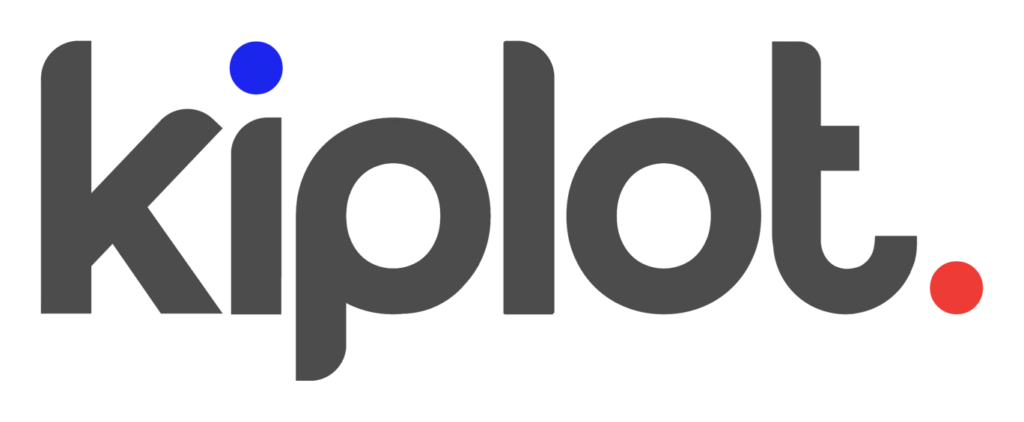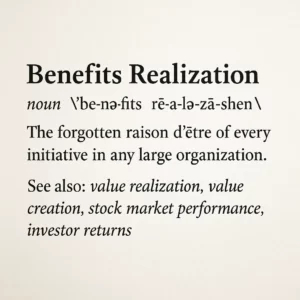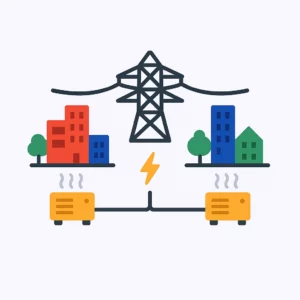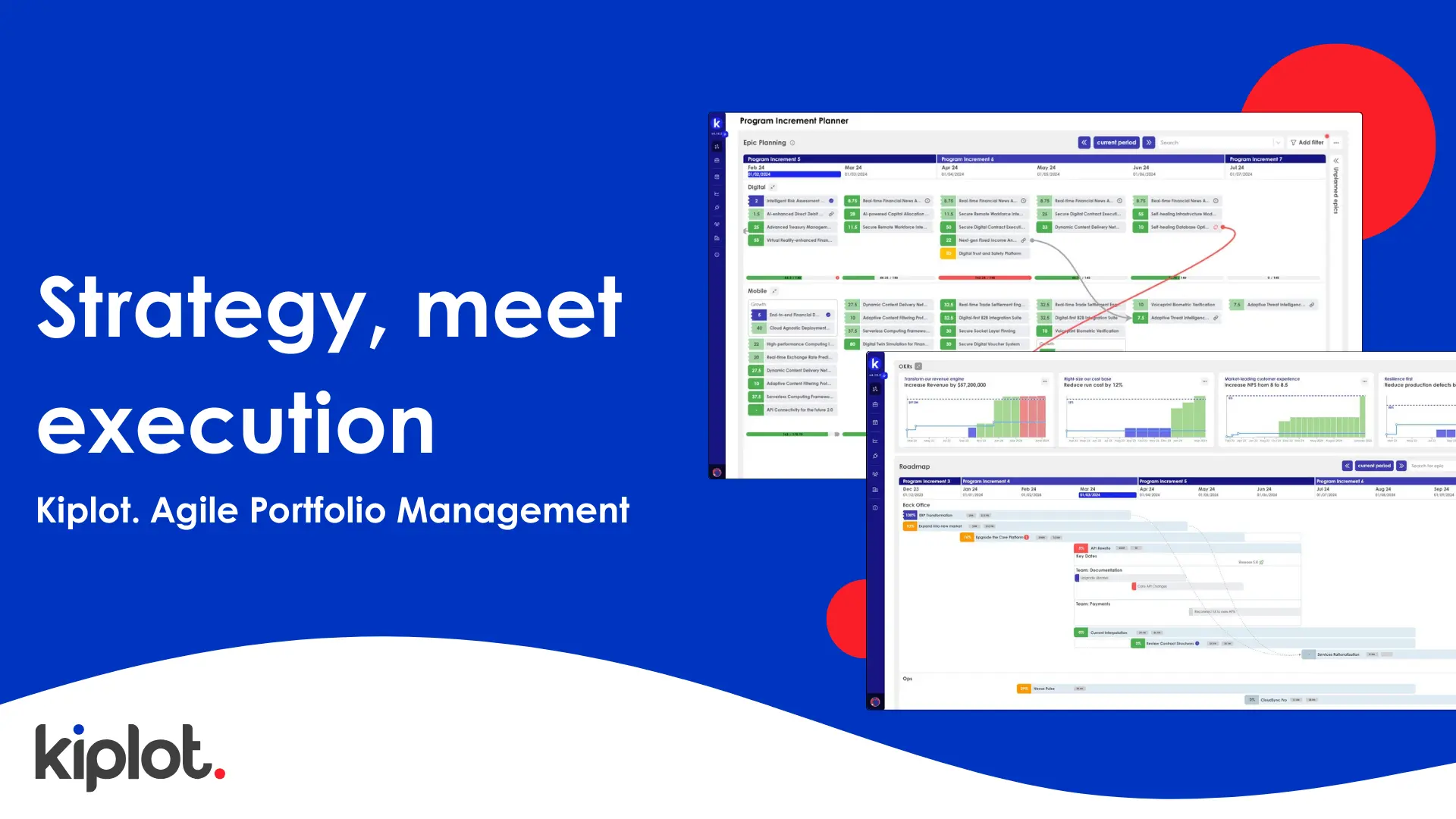In the world of the modern enterprise organizations, a centralized guide to guide to crafting OKRs is critical. Modern enterprise organisations, especially those adopting scaled agile frameworks, grapple with the significant challenge of optimal organizational design. Questions abound:
- “What are my value streams?”
- “How many Agile Release Trains (ARTs) should I have?”
- “How do guilds and Centers of Excellence (CoEs) work together?”
A frequent oversight is viewing the work hierarchy (e.g. Epic > Feature > Story) and the organizational structure (e.g. Value Stream > ART > Team) as separate entities. In the context of scaled agile, these two should be envisioned collectively, starting with the work hierarchy. When considered together, they define the “Portfolio Architecture”. Understanding how these elements influence each other is key to devising a portfolio that doesn’t just accommodate, but actively accelerates, your scaled agile transformation.
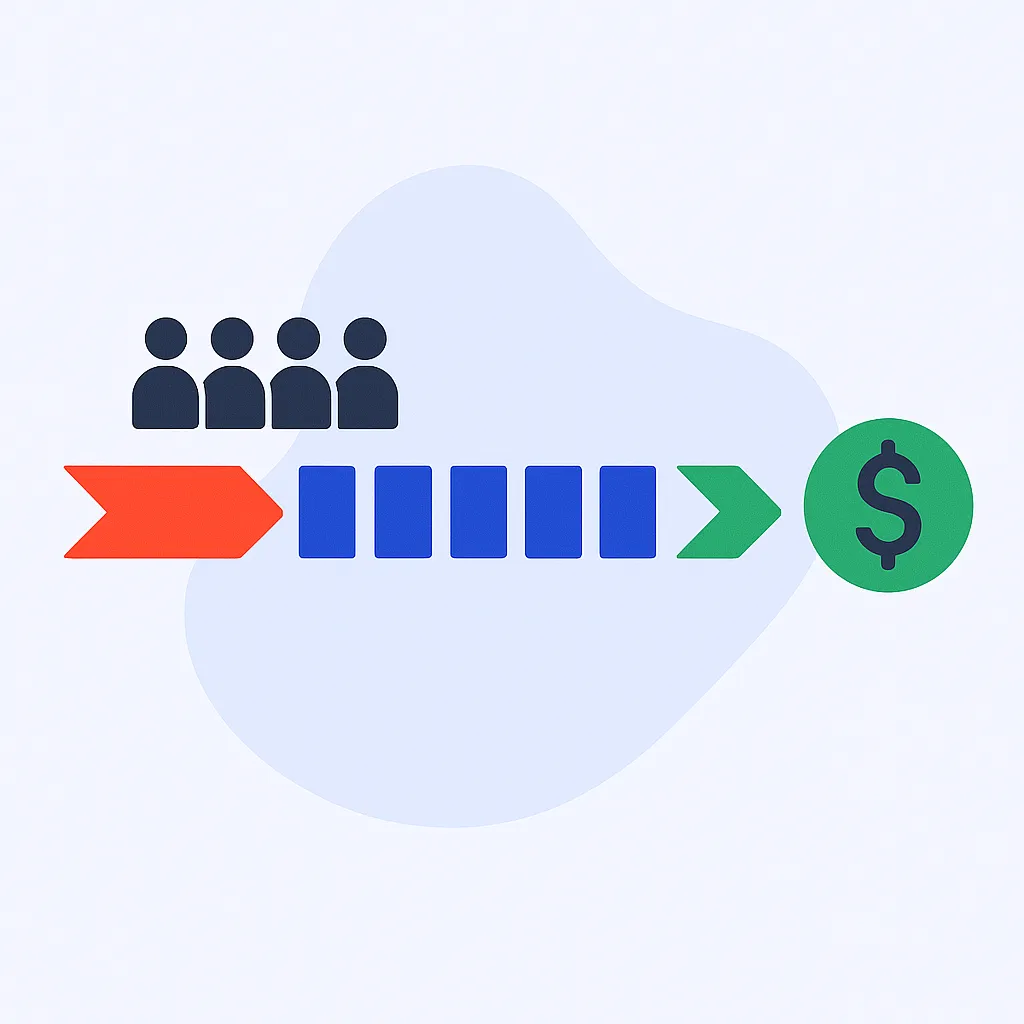
Understanding the Work Hierarchy and Navigating ‘Goldilocks Syndrome’
As organizations design their work hierarchy, they frequently encounter tension between various stakeholders. Engineering teams and those actually executing the work often seek detailed descriptions, wanting clarity on the ‘how’. Conversely, leadership and executive teams are drawn towards the bigger picture, focusing on the ‘why’ and the ‘what’.
Executives ask to see the organisation roadmap or holistic portfolio. The organisation rushes to ensure it’s updated and presents it back. Upon review review, the executive gives the feedback,
“There’s too much detail in this roadmap.”
The organisation takes the feeedback, iterates the work hierarchy and roadmap, and presents this back to the Executive, only to be told,
“Now there’s not enough detail in the roadmap.”
This oscillation is not typically caused by the presentation of the roadmap. It’s symptomatic of deeper issues with the design of the underlying work hierarchy.
This balancing act is reminiscent of the story of Goldilocks and the Three Bears, in which Goldilocks was searching for something that wasn’t too much (detail) or too little (detail), but “just right.” Similarly, organizations grapple with “Goldilocks Syndrome” when designing their work hierarchies. They’re in pursuit of an optimal level of granularity that satisfies different stakeholders—detail-oriented enough to guide execution teams, yet broad and strategic enough to provide leadership a broad, but powerful sense of progress towards their vision. Finding this balance is crucial, as it ensures alignment, clarity, and actionable guidance throughout the organization.
A carefully crafted work hierarchy finds the right balance (this is an example):
- Initiative: The ‘Why?’ – broad, strategic objectives setting the vision. These are typically a combination of Value Stream / Business Unit / Product specific objectives, as well as organisation-wide objectives.
- Epic: The ‘What?’ – providing clearer insights into desired outcomes and impacts.
- Feature: Progressing towards the ‘How?’ – sketching actionable steps to realize the epic.
- Story: The detailed ‘How?’ – where tasks and requirements are detailed.
It’s imperative not to conflate Organisational/Value Stream design with Work Hierarchy. While they are deeply interconnected, they serve distinct purposes and operate on different layers. Value Streams and Teams should not be considered within your work hierarchy. These are ways of organising who is doing the work. They are not ways of organising the work to be done.
Furthermore, stakeholders will often wish to view the work through various lenses, such as from a “Customer” or “Component” perspective. Think of these perspectives as “metadata” — they are very important ways in which the organisation may wish to carve out specific views or slices of the roadmap, but they shouldn’t be mistaken for the work hierarchy itself.
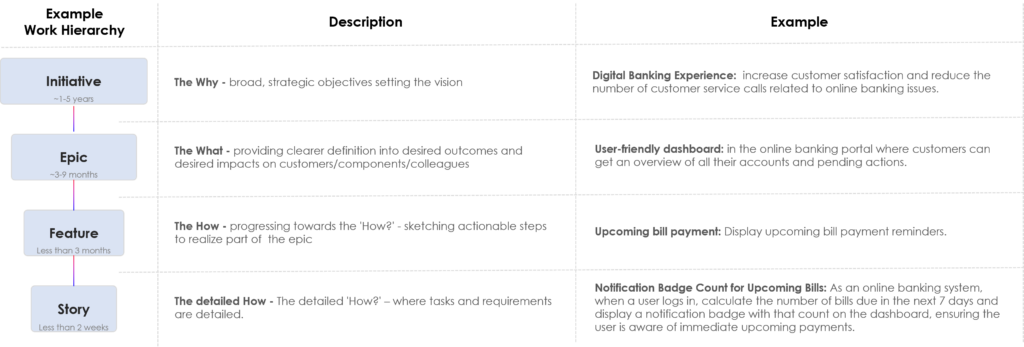
Who is Doing the Work?
Thinking about who is doing the work is a different, albeit interrelated task. Designing value streams is a balancing act between these three, sometimes opposing, principles:
2. Building Self-Sufficient Value Streams: Scaled agile champions the idea of self-sufficiency, encouraging teams to operate independently, minimizing handoffs, and fostering ownership of the entire value creation process. Designing value streams with this in mind is crucial. This entails ensuring that each value stream has the capabilities—both in terms of individual skills and collective team abilities—to produce value autonomously. Specifically, this should reduce the number of dependencies that a given value stream has “out” to other value streams for a typical delivery lifecycle.
3. Managing Scarce Resources: It’s a reality that it may not be possible to fit some resources, teams or skill sets into a single value stream. It also often does not make sense to split them out across value streams.
‘Security’ is a typical example of this type of team. These specialists are in such high demand that their work and capacity have to be managed separately. Instead of being part of a single value stream (or split out across your value streams), they function more like a shared service, serving multiple value streams as needed.
Not every skill set or team will seamlessly integrate into the value stream structure, and that’s okay. Rather than trying to force-fit everything, the goal is to design an architecture that maximizes efficiency, collaboration, and value delivery.
Typically, the three most important concepts to define:
- Value Streams: These are the core channels delivering customer value, spanning from concept to cash. Designing these requires a deep understanding of your customer’s journey and your products or services’ life cycle.
- Agile Release Trains (ARTs): ARTs are a collection of teams working on solutions that typically align with specific value streams. Most organizations find that the Epic level aligns closely with an ART, ensuring cohesion in work delivery.
- Guilds and Centers of Excellence (CoEs): While the former focuses on knowledge sharing and best practices among specialists, the latter is more about centralizing expertise and resources for broader organizational benefit.
Example Portfolio Architecture
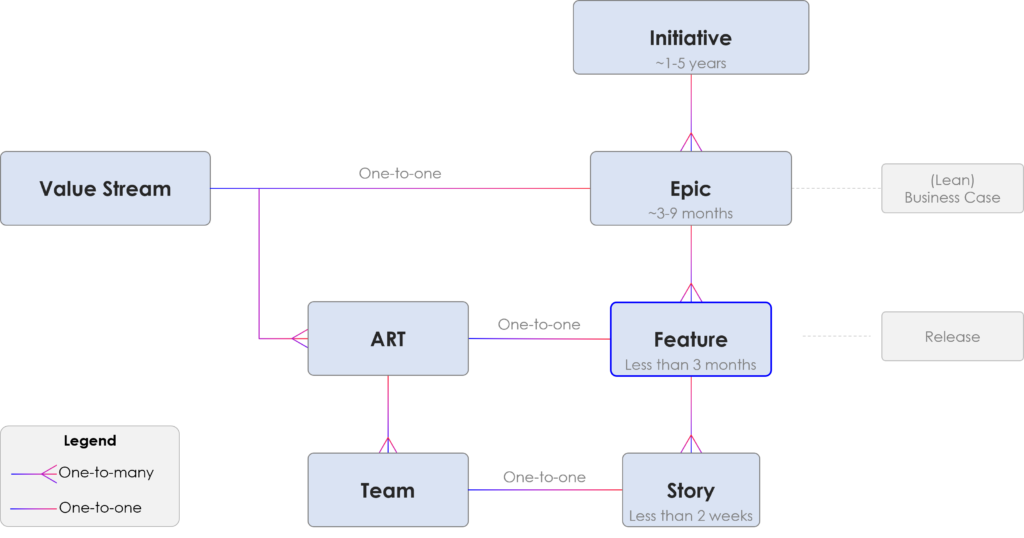
Designing with Synchronicity in Mind
When shaping your organization, it’s paramount to remember that the work hierarchy and organizational design are intertwined. By first establishing a clear work hierarchy, you set the foundation. This clarity subsequently informs your organizational design, ensuring every piece—be it a value stream, an ART, or a CoE—fits seamlessly.
Conclusion
Crafting organizational structures isn’t merely about designating roles and responsibilities. It’s about fostering understanding across every stakeholder level, from hands-on engineers to top-tier executives. Through an integrated approach to work hierarchies and organizational design, businesses can pave the way for a scaled agile transformation that’s both clear and effective.
